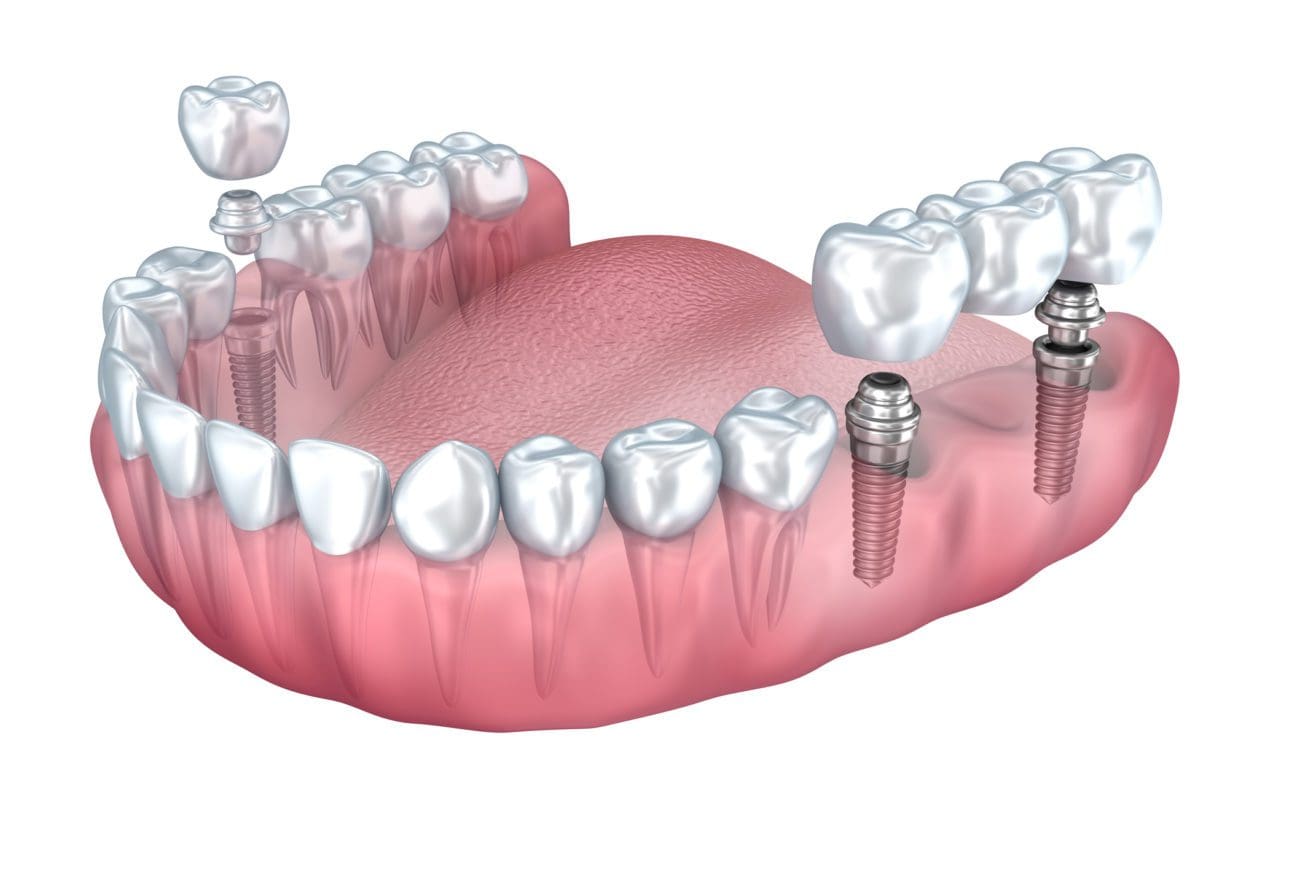The Definitive Guide to Dental Sense
Wiki Article
About Dental Sense
Table of ContentsThe 2-Minute Rule for Dental SenseGetting The Dental Sense To WorkThe Basic Principles Of Dental Sense The Definitive Guide for Dental Sense
are clinical gadgets operatively implanted into the jaw to recover a person's ability to chew or their appearance. They offer assistance for synthetic (phony) teeth, such as crowns, bridges, or dentures. When a tooth is shed because of injury or illness, an individual can experience problems such as fast bone loss, malfunctioning speech, or changes to eating patterns that cause discomfort.Oral implant systems include a dental implant body and oral implant joint and may additionally include a joint fixation screw. Professional teeth whitening. The dental implant body is operatively put in the jawbone in area of the tooth's root. The oral implant abutment is usually connected to the implant body by the joint fixation screw and extends via gum tissues right into the mouth to sustain the affixed fabricated teeth
(https://dentalsense.godaddysites.com/f/transform-your-smile)Framework of The Dental Implant System picking dental implants, talk with your oral service provider regarding the possible benefits and risks, and whether you are a candidate for the procedure. Things to take into consideration: Your overall health is a crucial element in determining whether you are a good candidate for dental implants, how long it will certainly require to heal, and how much time the implant might stay in place.
Smoking cigarettes might impact the recovery procedure and decrease the long-term success of the dental implant. The recovery procedure for the dental implant body may take several months or longer, during which time you normally have a short-term abutment instead of the tooth. the dental implant procedure: Thoroughly follow the dental hygiene guidelines offered to you by your oral provider.
What Does Dental Sense Do?
Implant failure can cause the demand for another medical procedure to take care of or change the implant system. Brings back the capability to chew Brings back aesthetic look Assists keep the jawbone from diminishing due to bone loss Protects the health and wellness of the surrounding bone and gums Aids keep surrounding (neighboring) teeth steady Enhances high quality of life Damage to surrounding all-natural teeth throughout implant placement Injury to the surrounding cells during surgery, such as sinus opening Injury during surgical treatment (for instance, fracture of surrounding jawbone) Inadequate function, such as seeming like the teeth do not attack with each other typically An experience that the tooth hangs or twisting in position resulting from an abutment screw loosening up Implant body failing (looseness of the implant body) due to systemic infection, which might be more probable in individuals with unchecked diabetes mellitus as a result of neighborhood infection in bone and gums sustaining the dental implant body as a result of delayed recovery, which might be a lot more likely in patients who smoke Difficulty cleaning up the periodontals around the dental implant, causing poor oral hygiene Without treatment gum condition Post-surgical pins and needles as a result of nerve impingement or damages Always notify health treatment providers and imaging specialists that you have dental implants before any type of magnetic resonance imaging (MRI) or x-ray procedures.FDA is not familiar with any type of negative events reported for MRI or x-ray procedures with oral implants. Oral implants systems are usually made from materials that follow international consensus standards of the International Organization for Standardization (ISO) or ASTM International. These criteria have details of what makes a secure product.

An oral implant is a structure that replaces a missing tooth. With screw-like gadgets, the doctor inserts a dental implant right into the jawbone, and it acts as a support for an artificial tooth, called a crown.
The smart Trick of Dental Sense That Nobody is Discussing
Some people are not eligible for oral implant surgical treatment. It is for dental doctors to run on people with: intense illnessuncontrollable metabolic diseasebone or soft tissue condition or infectionIf these issues are fixed, a person can have the surgery. In, oral specialists avoid running on individuals with: If individuals with any of the above undertake oral implant surgery, there is a greater risk of weblink the dental implant stopping working.
Dental dental implant surgery is a customized procedure. Provide you time to heal. Attach the article and last crown, bridge or denture.
Next off, your surgeon will carefully place the oral implant right into your jaw. Finally, your doctor will certainly reposition your gum tissues and close the incision with stitches. If your implant is near the front of your mouth, your dentist will make a short-lived tooth for you to wear until you recover. By doing this, you won't have a gap in your smile while you recover.
Dental Sense for Dummies
Throughout the healing stage, your jawbone must fuse to the oral implant. This procedure can take anywhere from 3 to nine months.As soon as your dental implant heals, your dental professional can connect the abutment (small adapter article) and your last repair (crown, bridge or denture). This normally takes concerning one hour to finish and might need a second minor surgical procedure. You shouldn't feel any type of pain during your dental implant treatment because your service provider will certainly use medication to numb your gum tissues.
Report this wiki page